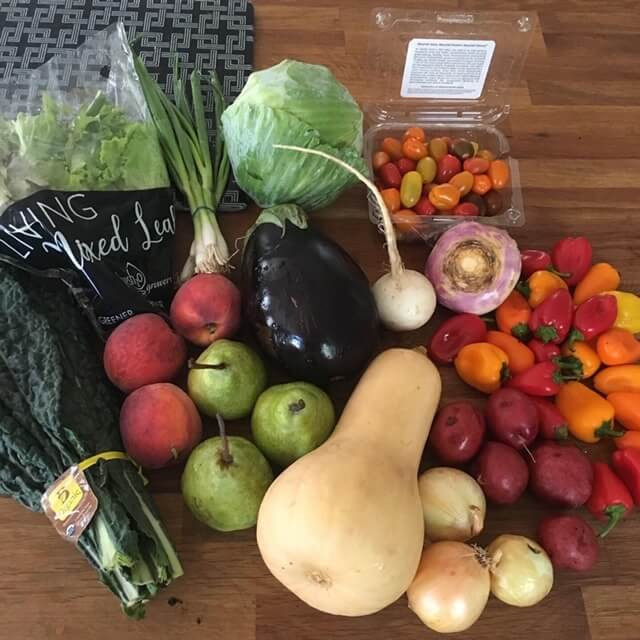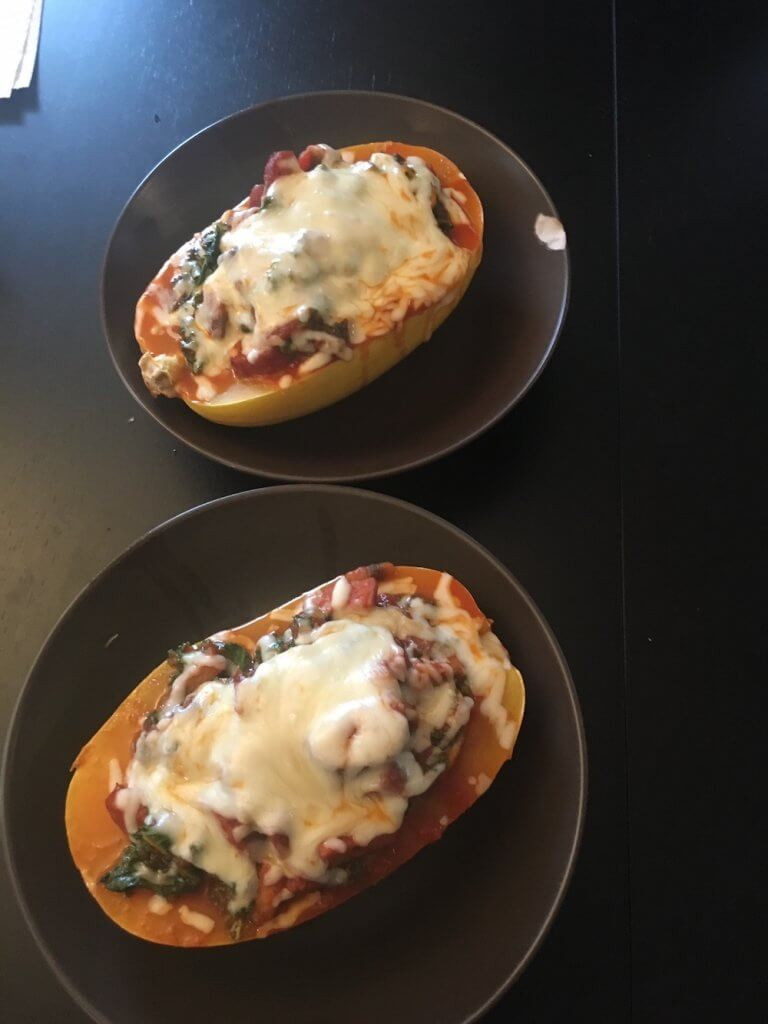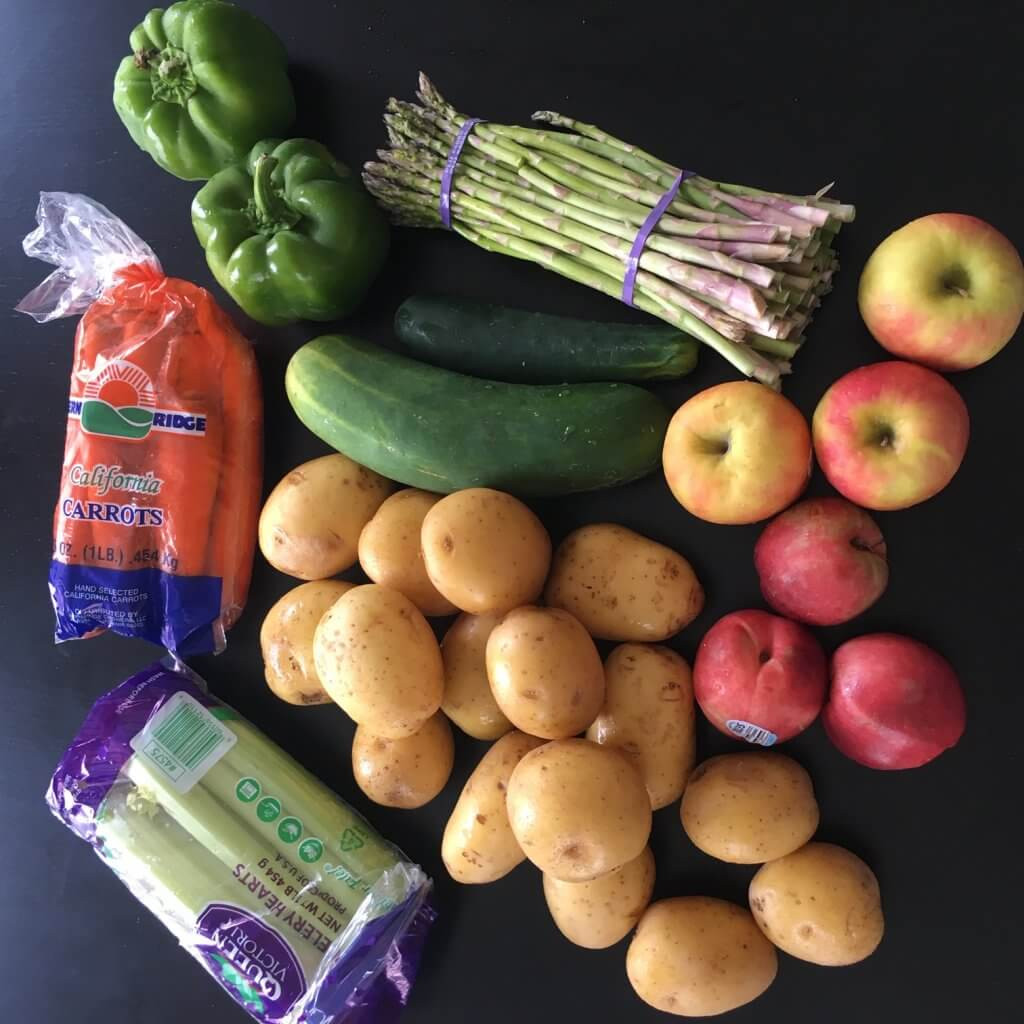Imperfect Food, which encompasses oddly shaped or surplus produce, presents a fantastic way to save money, reduce food waste, and enjoy fresh, healthy ingredients, and at larosafoods.com, we champion this sustainable approach to eating. Embracing these “misfit” fruits and vegetables doesn’t just benefit your wallet; it contributes to a more sustainable food system. We provide diverse recipes and cooking tips to make the most of these unique ingredients.
At larosafoods.com, discover delicious ways to use these rescued goods, promoting environmental stewardship and a more economical grocery budget. Our content encourages creative cooking with imperfect produce and offers resources for mindful eating.
1. Understanding Imperfect Food
Imperfect food refers to produce that doesn’t meet the cosmetic standards of grocery stores, or surplus goods that are still perfectly edible and nutritious. Understanding the root causes of this type of food waste is the first step in embracing the concept of imperfect food.
1.1. What Exactly is Imperfect Food?
Imperfect food includes fruits, vegetables, and other groceries that are edible but don’t meet standard cosmetic expectations of grocery stores. This can mean they’re oddly shaped, bruised, discolored, or are simply surplus.
1.2. What Causes Food to Be Considered Imperfect?
Several factors contribute to perfectly good food being deemed “imperfect”:
- Cosmetic Standards: Consumers often expect fruits and vegetables to look a certain way – uniformly sized, perfectly colored, and without blemishes. Produce that deviates from these norms is often rejected.
- Surplus Production: Farms sometimes overproduce to hedge against weather and disease. This can lead to a surplus that exceeds market demand. According to research from the University of California, Berkeley, in July 2023, overplanting to mitigate risks from unpredictable weather conditions often yields surplus crops that struggle to find buyers.
- Cancelled Orders: Sometimes large orders from restaurants or grocery chains are canceled, leaving farmers with excess produce they can’t sell through traditional channels.
- Inefficient Harvesting: In some cases, it may not be economically viable for farmers to harvest certain crops if market prices are too low or labor costs are too high.
1.3. The Scale of Food Waste in the US
Food waste is a significant problem in the United States. The Natural Resources Defense Council (NRDC) estimates that approximately 40% of food in the US is wasted. This waste happens at every stage of the supply chain, from farms to consumers’ homes.
1.4. Environmental Impact of Food Waste
Food waste has significant environmental consequences:
- Greenhouse Gas Emissions: When food decomposes in landfills, it releases methane, a potent greenhouse gas.
- Water Waste: Producing food requires vast amounts of water. When food is wasted, so is the water used to grow it.
- Land Use: Agriculture requires land. Wasting food means we’re using land unnecessarily.
- Energy Consumption: Energy is used in every stage of food production, from farming to transportation. Wasting food wastes this energy as well.
2. Benefits of Choosing Imperfect Food
Choosing imperfect food offers a wide range of advantages, from financial savings to environmental responsibility. Embracing these foods not only benefits consumers but also contributes positively to our planet.
2.1. Cost Savings on Groceries
One of the most immediate benefits of buying imperfect food is the cost savings. These items are often sold at a discount because they don’t meet cosmetic standards. This can significantly reduce your grocery bill, allowing you to enjoy fresh produce without breaking the bank.
2.2. Reducing Food Waste
By purchasing imperfect food, you’re directly combating food waste. You’re helping to ensure that perfectly edible produce doesn’t end up in landfills, reducing methane emissions and conserving resources.
2.3. Supporting Sustainable Agriculture
Buying imperfect food supports farmers who are committed to sustainable practices. It provides them with an outlet for their entire harvest, not just the visually perfect portion.
2.4. Encouraging Healthy Eating Habits
The affordability of imperfect food can encourage you and your family to eat more fruits and vegetables. This can lead to a healthier diet and improved overall well-being.
2.5. Promoting Creative Cooking
Working with imperfect food can spark creativity in the kitchen. You might find yourself experimenting with new recipes and techniques to make the most of what you have.
2.6. Ethical Considerations
Choosing imperfect food is an ethical decision. It’s about valuing food for its nutritional content and taste, rather than its appearance. It’s a step towards a more just and sustainable food system.
3. Where to Find Imperfect Food
Finding imperfect food is becoming increasingly easy. Several options are available, from specialized delivery services to local farmers’ markets. Here’s a guide to help you locate these resources.
3.1. Imperfect Produce Delivery Services
Companies like Misfits Market specialize in sourcing and delivering imperfect produce directly to your door. These services partner with farmers to rescue produce that would otherwise go to waste, offering it to consumers at a discounted price.
3.2. Local Farmers’ Markets
Farmers’ markets are a great place to find imperfect produce. Farmers are often willing to sell their less-than-perfect items at a reduced price, and you can directly support local agriculture.
3.3. Community Supported Agriculture (CSA)
CSAs involve buying a “share” of a local farm’s harvest. In return, you receive a box of produce each week. CSAs often include imperfect items, as they’re focused on utilizing the entire harvest.
3.4. Grocery Stores
Some grocery stores are beginning to offer imperfect produce sections. Keep an eye out for these displays in your local supermarket.
3.5. Food Banks and Pantries
Food banks and pantries often receive donations of imperfect produce. Supporting these organizations can help ensure that this food reaches those in need.
4. Addressing Common Concerns About Imperfect Food
While the benefits of buying imperfect food are clear, some consumers have concerns about quality, safety, and selection. Here’s how to address those concerns.
4.1. Is Imperfect Food Safe to Eat?
Yes, imperfect food is safe to eat. The term “imperfect” refers to cosmetic flaws, not to safety or nutritional value. As long as the produce is handled and stored properly, it’s perfectly safe to consume.
4.2. Does Imperfect Food Taste the Same?
Imperfect food tastes the same as its perfect-looking counterparts. The flavor and texture are unaffected by cosmetic imperfections.
4.3. What About Organic Imperfect Food?
Some imperfect food is organic. Look for organic certifications when purchasing to ensure that you’re getting organically grown produce.
4.4. Limited Choices of Imperfect Food
While imperfect food services may have a slightly smaller selection than traditional grocery stores, they still offer a wide variety of fruits and vegetables. You can often customize your box to include your favorites.
4.5. Lower Product Quality of Imperfect Food
On rare occasions, imperfect food may have a shorter shelf life than perfect produce. However, this is usually due to minor bruising or blemishes, not to any inherent quality issue.
5. How to Incorporate Imperfect Food Into Your Diet
Integrating imperfect food into your diet is easy and can be a fun culinary adventure. Here are some tips and ideas to get you started.
5.1. Meal Planning Around Imperfect Produce
Plan your meals based on the imperfect produce you have on hand. This can lead to creative and delicious dishes you might not have otherwise tried.
5.2. Creative Recipes Using Imperfect Food
There are countless ways to use imperfect food in recipes:
- Smoothies: Blend imperfect fruits and vegetables into smoothies for a quick and healthy breakfast or snack.
- Soups and Stews: Use imperfect vegetables in soups and stews, where their appearance doesn’t matter.
- Roasted Vegetables: Roast imperfect vegetables with herbs and spices for a flavorful side dish.
- Jams and Preserves: Turn imperfect fruits into homemade jams and preserves.
- Pickled Vegetables: Pickle imperfect vegetables for a tangy and delicious condiment.
5.3. Tips for Storing Imperfect Food
Proper storage can extend the shelf life of imperfect food:
- Refrigerate: Store fruits and vegetables in the refrigerator to slow down spoilage.
- Separate: Keep ethylene-producing fruits (like apples and bananas) away from other produce to prevent premature ripening.
- Use Crisper Drawers: Use the crisper drawers in your refrigerator to maintain optimal humidity levels for different types of produce.
5.4. Making the Most of Limited Choices
When your selection is limited, focus on versatility. Choose produce that can be used in multiple dishes, and don’t be afraid to experiment with new flavor combinations.
6. Comparing Imperfect Food Delivery Services
Several companies offer imperfect food delivery services. Here’s a comparison of some of the most popular options.
6.1. Misfits Market
Misfits Market sources imperfect produce and pantry items and delivers them directly to your door. They offer a customizable box, allowing you to choose the items you want.
6.2. Imperfect Foods
Imperfect Foods (now part of Misfits Market) also delivers imperfect produce and groceries. They are known for their commitment to reducing food waste and supporting sustainable agriculture.
6.3. Comparison Table
| Category | Misfits Market |
|---|---|
| Contents | Fruits, vegetables, pantry items, dairy, and meat |
| Order Customization | Complete customization; add items in any quantity |
| Organic Produce | Most products are organic, with some non-organic options |
| Price | Charges per item; minimum order of $15; produce is approximately 40% off grocery store prices |
| Delivery Schedule | In delivery areas, Misfits Market delivers on a set day/time; outside delivery zones, ships via FedEx or another third party |
| Delivery Fee | $5.99 or free shipping on orders above $60 |
| Locations | Delivers to nearly all addresses in the lower 48 states (and Washington DC) |




6.4. How to Choose the Right Service
Consider your needs and preferences when choosing an imperfect food delivery service:
- Selection: Do they offer the types of produce and groceries you typically buy?
- Customization: Can you customize your box to include your favorite items?
- Price: Does the service fit your budget?
- Delivery Schedule: Does the delivery schedule work for you?
- Location: Do they deliver to your area?
7. Success Stories: Real-Life Impact of Imperfect Food
Hearing from others who have embraced imperfect food can be inspiring. Here are some success stories to motivate you.
7.1. Reducing Grocery Bills
Many people have significantly reduced their grocery bills by switching to imperfect food. The discounts offered by these services can add up over time, saving you hundreds of dollars per year.
7.2. Expanding Culinary Horizons
Working with imperfect food has led many people to discover new recipes and cooking techniques. The challenge of using what’s available can spark creativity in the kitchen.
7.3. Contributing to a Sustainable Lifestyle
Choosing imperfect food is a tangible way to reduce your environmental impact. It’s a small change that can make a big difference.
8. The Future of Imperfect Food
The imperfect food movement is growing, and its future looks bright.
8.1. Increased Awareness
As more people become aware of the problem of food waste, the demand for imperfect food is likely to increase.
8.2. Technological Innovations
Technological innovations could make it easier to sort, store, and distribute imperfect food, further reducing waste.
8.3. Policy Changes
Government policies could incentivize farmers and businesses to reduce food waste, creating a more sustainable food system.
9. Taking Action: How You Can Get Involved
You can take several steps to get involved in the imperfect food movement.
9.1. Make Informed Purchasing Decisions
Choose imperfect food whenever possible. Support companies and farmers who are working to reduce food waste.
9.2. Advocate for Change
Talk to your friends and family about the problem of food waste. Encourage them to make informed purchasing decisions.
9.3. Reduce Food Waste at Home
Plan your meals carefully, store food properly, and use leftovers creatively.
9.4. Support Food Banks and Pantries
Donate imperfect food to food banks and pantries. Volunteer your time to help these organizations distribute food to those in need.
10. Addressing Misconceptions About Imperfect Food
It’s crucial to debunk some common misconceptions about imperfect food to encourage more people to embrace it.
10.1. Imperfect Food is Not Lower in Quality
Imperfect food is just as nutritious and delicious as perfect-looking produce. The only difference is its appearance.
10.2. Imperfect Food is Not Unsafe
Imperfect food is safe to eat as long as it’s handled and stored properly.
10.3. Imperfect Food is Not Always Organic, But Can Be
Some imperfect food is organic, and some is not. Look for organic certifications when purchasing if that’s important to you.
10.4. Imperfect Food Doesn’t Only Include Fruits and Vegetables
Imperfect food can also include pantry items, dairy, and meat.
By understanding and embracing imperfect food, you can save money, reduce food waste, support sustainable agriculture, and promote a healthier lifestyle. Join the movement today. At larosafoods.com, we’re here to guide you with delicious recipes, practical tips, and resources to make the most of imperfect produce. Let’s work together to create a more sustainable and equitable food system.
Ready to take the next step? Visit larosafoods.com for a wealth of recipes, cooking tips, and nutritional information to help you make the most of imperfect food. Discover how easy and rewarding it can be to reduce food waste, save money, and enjoy delicious, healthy meals.
Address: 1 S Park St, San Francisco, CA 94107, United States. Phone: +1 (415) 987-0123. Website: larosafoods.com.
FAQ About Imperfect Food
1. What exactly does “imperfect food” mean?
Imperfect food refers to edible produce and grocery items that don’t meet conventional cosmetic standards or are surplus, meaning they might have unusual shapes, slight blemishes, or are simply in excess supply.
2. Is imperfect food safe to consume?
Yes, imperfect food is entirely safe to eat, as the term “imperfect” only refers to its appearance and not its safety or nutritional value; proper handling and storage ensure it’s perfectly safe to consume.
3. How does buying imperfect food help the environment?
Purchasing imperfect food helps reduce food waste, which in turn lowers methane emissions from landfills, conserves water and land resources, and reduces the energy consumed in food production and transportation.
4. Can I find organic options when buying imperfect food?
Yes, some imperfect food is certified organic, and you should look for organic labels when purchasing to ensure you are buying organically grown produce.
5. Where can I buy imperfect food?
You can find imperfect food through delivery services like Misfits Market, at local farmers’ markets, through Community Supported Agriculture (CSA) programs, and sometimes in dedicated sections of grocery stores.
6. Does imperfect food taste different from “perfect” food?
No, imperfect food tastes the same as its visually perfect counterparts, with cosmetic imperfections not affecting the flavor or texture.
7. What are some creative ways to use imperfect food in cooking?
Creative uses for imperfect food include blending them into smoothies, incorporating them into soups and stews, roasting them as a side dish, making jams and preserves, or pickling them as condiments.
8. How should I store imperfect food to prolong its shelf life?
Store imperfect food in the refrigerator, separate ethylene-producing fruits like apples and bananas from other produce, and use crisper drawers to maintain optimal humidity levels.
9. Is imperfect food cheaper than regular produce?
Yes, imperfect food is often sold at a discount because it doesn’t meet cosmetic standards, allowing you to save money on your grocery bill.
10. What should I do if I receive imperfect food that is already spoiled?
If you receive imperfect food that is already spoiled, contact the delivery service or seller for a refund or replacement, as reputable providers will typically address such issues promptly.



